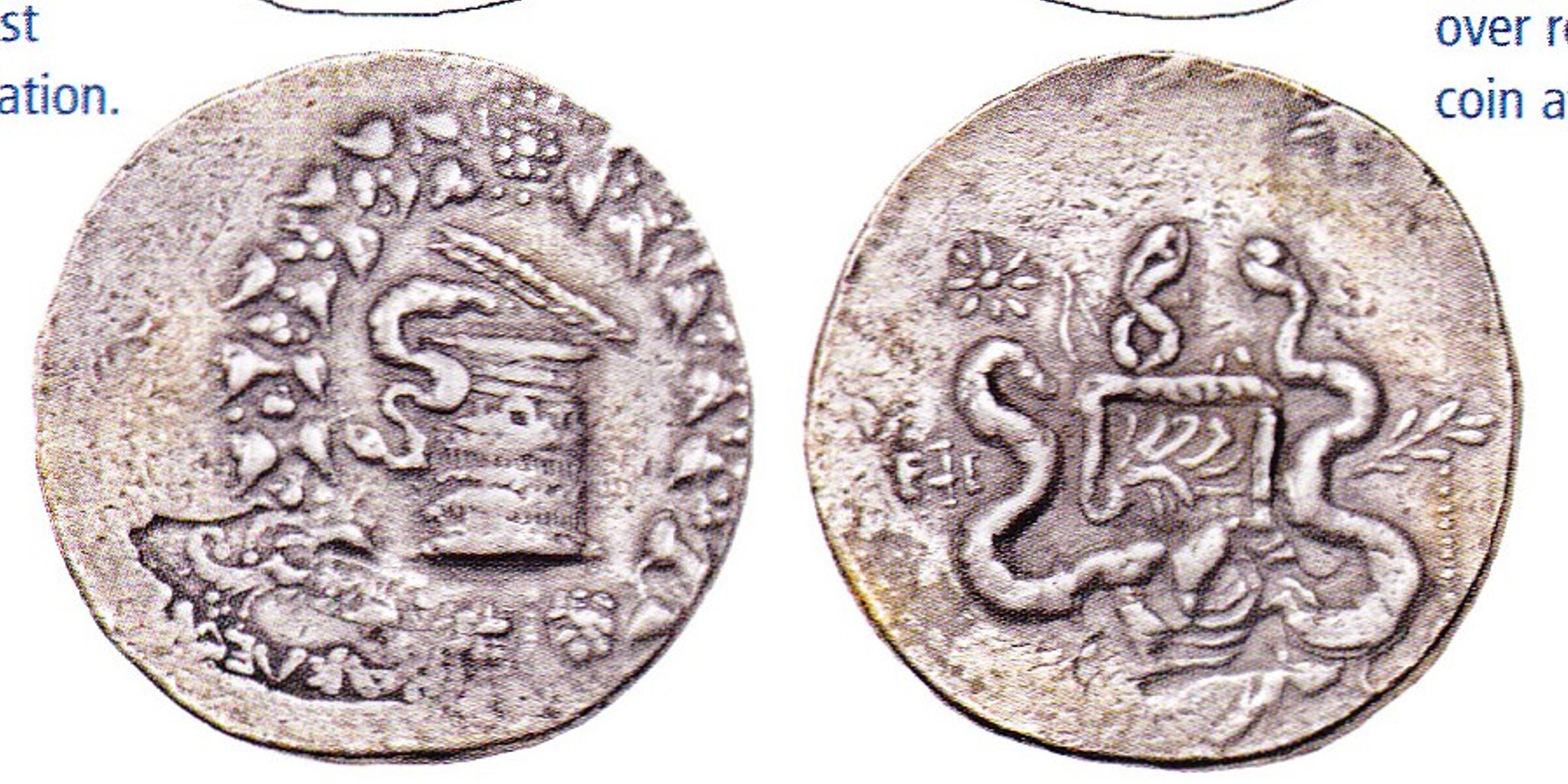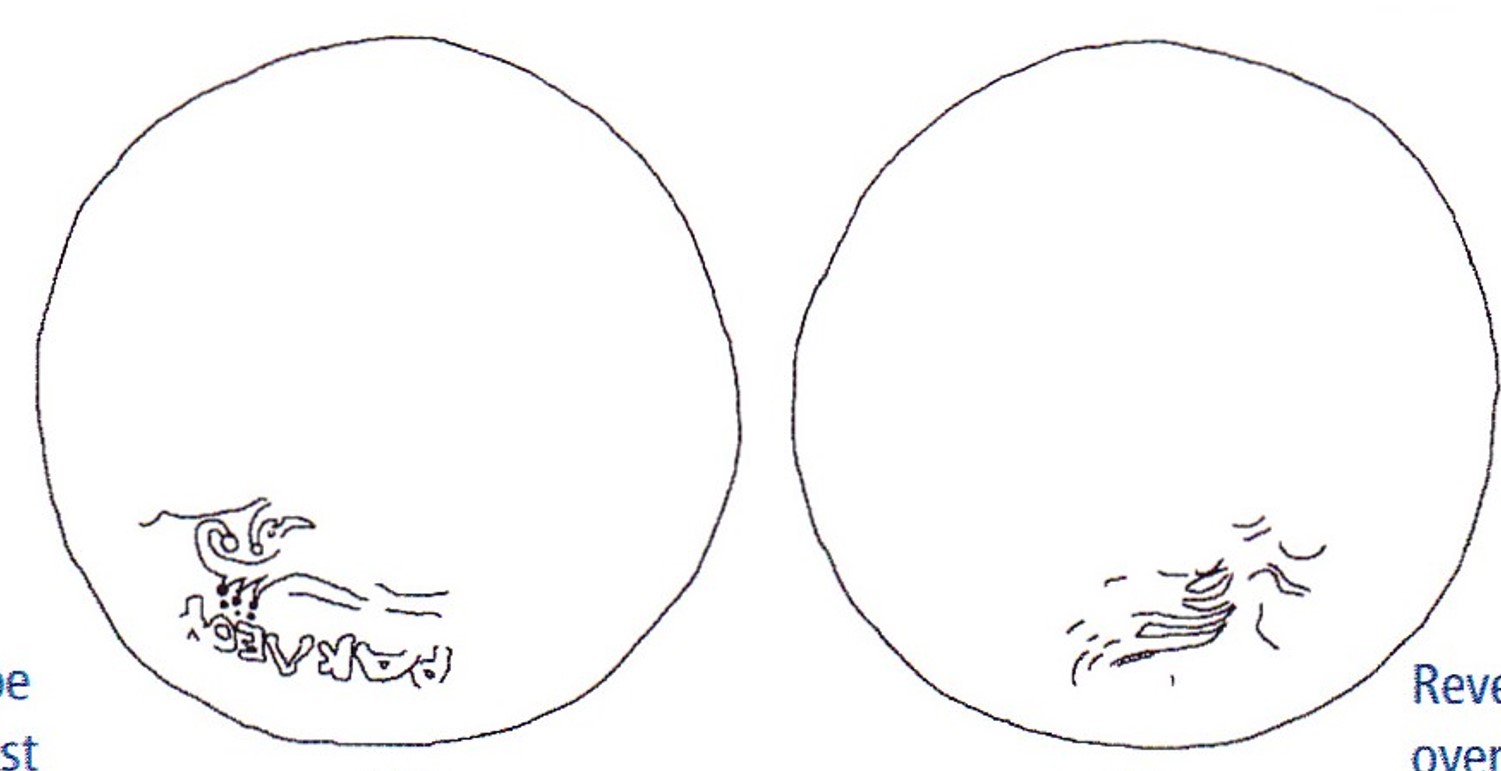2144 - Ephesus (cistophoric tetradrachm cista/bowcase) over Thasos (Dionysus/Heracles) (MacDonald coll., 123): Difference between revisions
From SILVER
No edit summary |
|||
| Line 17: | Line 17: | ||
|Weight=12.73 | |Weight=12.73 | ||
|Axis=12 | |Axis=12 | ||
|Denomination= | |Denomination=cistophoric tetradrachm | ||
|Standard=Cistophoric | |Standard=Cistophoric | ||
|Coin reference=MacDonald 2009, n° 123 ; Price and Nash, Coin Hoards, vol. 2, p. 29, no. 94 (fig. 11) | |Coin reference=MacDonald 2009, n° 123 ; Price and Nash, Coin Hoards, vol. 2, p. 29, no. 94 (fig. 11) | ||
Latest revision as of 20:05, 7 May 2024
150 BCE - 140 BCE | ΕΦΕ
Location/history
| Private collection(s)Private collection(s) ᵖ: | D. MacDonald collection, n° 123 |
Overstriking coin
Description
| ObverseInscription or printing placed on the obverse.: | Cista mystica with half-open lid, from which a snake issues to left, all within ivy wreath. | ReverseInscription or printing placed on the reverse.: | ΕΦΕ (Greek) Two snakes surrounding an ornamented bow case, strap right, containing strung bow. To upper left, star. To right, laurel branch from which hangs long fillet terminating in large ornemental tassel (tassel off-flan her). |
Mint and issuing power
| MintIdentifies the place of manufacture or issue of a numismatic object.: | Ephesus | Ancient regionAncient region. | Ionia | Modern countryModern country: Turkey | AuthorityIdentifies the issuing power. The authority can be "pretended" when the name or the portrait of X is on the coin but he/she was not the issuing power. It can also be "uncertain" when there is no mention of X on the coin but he/she was the issuing power according to the historical sources: | Attalid Kingdom |
Chronology
| FromIdentifies the initial date in a range assigned in a numismatic context. 150 BCE toIdentifies the final date in a range assigned in a numismatic context.. 140 BCE | Hellenistic 323-30 BC |
Physical description
| MetalThe physical material (usually metal) from which an object is made.: Silver |
WeightWeight of the numismatic object (in grams). in grams: 12.7312.73 g <br />12,730 mg <br /> | DenominationTerm indicating the value of a numismatic object. Examples: tetradrachm, chalkous, denarius.: cistophoric tetradrachm | AxisDescribes the directional relationship between the obverse and reverse of a numismatic object.: 1212 mm <br />1.2 cm <br /> |
| StandardStandard.: Cistophoric | |||
References
| Coin referenceReference of the Coin: | MacDonald 2009, n° 123, Price and Nash, Coin Hoards, vol. 2, p. 29, no. 94 (fig. 11) | Coin series referenceReference to coin series study: | Kleiner - Noe 19771Kleiner - Noe 1977, MacDonald 20092MacDonald 2009, n° 123, Carbone 20203Carbone 2020 |
Overstruck type
Description
| ObverseInscription or printing placed on the obverse.: | Head of young Dionysos right, wearing ivy leaf (visible on reverse: lock of hair visible on lower part of bow case and snakes) | ReverseInscription or printing placed on the reverse.: | ΗΕΡΑΚΛΕΟΥΣ ΣΩΤΗΡΟΣ ΘΑΣΙΩΝ (Greek) Heracles standing to front, nude, head left, holding lion skin and club. In left field, letter or monogram (visible on obverse: part of legend and ornate trailing edges of lion skin visible in field). |
Mint and issuing power
| MintIdentifies the place of manufacture or issue of a numismatic object. ᵖ: | Thasos | Ancient regionAncient region. ᵖ | Thrace | Modern countryModern country: Greece | AuthorityIdentifies the authority in whose name (explicitly or implicitly) a numismatic object was issued. ᵖ: | Roman Republic |
Chronology
| FromIdentifies the initial date in a range assigned in a numismatic context. 160 BCE toIdentifies the final date in a range assigned in a numismatic context.. 140 BCE | Hellenistic 323-30 BC |
Physical description
| DenominationTerm indicating the value of a numismatic object. Examples: tetradrachm, chalkous, denarius. ᵖ: | tetradrachm |
StandardStandard. ᵖ: | Attic |
References
| Coin type referenceReference to coin series study ᵖ: | HGC 64HGC 6, n° 358 |
Additional data
| Frequency of overstrikesFrequency of overstrikes: | rare and concentrated | Level of confidenceLevel of confidence of the identification: | sure |
| RemarksRemarks: | |||


